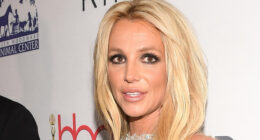Whether due to rising prices or decision fatigue, it can feel overwhelming to go shopping for groceries and household items nowadays.
Especially as consumers become increasingly aware of the hazardous chemicals in our cleaning and cosmetics products, as well as in our food and water, it can feel like you need a PhD to vet your products with infinite time to dedicate to research that most of us don’t have.
Most recently, a new bombshell study by the Environmental Working Group revealed that Cheerios and Quaker Oat lovers have been exposed to a toxic pesticide linked to infertility used on oats to make their favorite breakfast foods.
Even consumers with PhDs in brain science like Chen Orbach Rosner have had this experience, which is why she and her husband Amit Rosner created a free, non-toxic shopping app called Clearya to inform and empower consumers. Using the app, consumers are alerted to various levels of toxins in their products that can be purchased from major retailers including Amazon, Walmart and Sephora.
You can also try natural alternatives to store bought products using common household ingredients such as baking soda, vinegar and citrus.
Speaking exclusively to the Daily Express, Amit and Chen shared their five best shopping tips for consumers to reduce exposure to toxins without shelling out tons of cash.
READ MORE: Four genius and effective natural cleaning product swaps
Tips for consumers looking to shop for non-toxic cleaning products
1. ‘Use your senses’
While the chemical ingredient list can look foreign to layman’s eyes, leaving us to feel overwhelmed, Chen assured that we are more capable than we think of sussing out what is and isn’t good for us.
“Use your noses,” she says. “Everything is perfumed. A very good way to sense it is to just use our senses.”
2. Check label for fragrances and opt for unscented products
One particular ingredient that Amit warned consumers to be cautious of is fragrances.
“The first thing I would say is if you see the word ‘fragrance’ in the ingredient list, then opt for the unscented version,” he said.
Defined by Michigan State Univesity’s Center for Research on Ingredient Saftey as “substances possessing strong-smelling organic compounds that have characteristic, pleasant odors,” Amit explains due to trade secret laws that the exact ingredients of fragrances are “not properly disclosed to consumers,” making it a wild card ingredient that “could be toxic.”
3. Check the label and avoid these common chemicals
Clearya, similar to the EU, uses a hazard-based approach, which is why far more chemicals are banned here than in the US. However, the following ingredients should be avoided as much as possible.
Common endocrine-disrupting and carcinogenic chemicals found in cleaning and cosmetic products include but are not limited to phthalates, phytoestrogens, dioxin, PFAS, parabens, benzophenone, triclosan and BPA.
4. Avoid plastics and opt for glass and stainless steel products
Given the popularity of plastic use, it is impossible to avoid it all the time. However, when you can, it is best to avoid it.
Bombshell after bombshell report has been released in recent years showing that plastics – a synthetic byproduct of petroleum that is non-biodegradable – are so widely used that it is found in the human bloodstream, as well as in our oceans and landfills.
“The other thing, in general, plastic, if, whenever you can switch from plastic to glass or to stainless steel, then it would be better, especially for storage of food.”
He adds: “Reduce the amount of food you consume that comes in plastic, but also in containers and canned food” because cans “sometimes have liner or coating that may contain BPA.”
While it can cost more upfront, buying glass and stainless steel reusable food storage containers and bottles can save you money in the long run while also helping the environment and your own health.
5. Use the Clearya app to save time
By using apps like Clearya, consumers can save time because all this work is done for them. The duo, who have science backgrounds, collaborate with research centers and non-profits in the space such as California’s Department of Toxic Substances Control Safer Products program with the California Department of Public Health, to use data to build their platform.
“I think one of the really important things is to not get overwhelmed because you think ‘It’s all around me, I can’t do anything about it,’” Chen, who began her non-toxic journey and dedicated to create the app while recovering from breast cancer, said. “If you make small changes, step by step, you can eliminate more and more hazardous chemicals from your life and eventually it does affect your health.”









